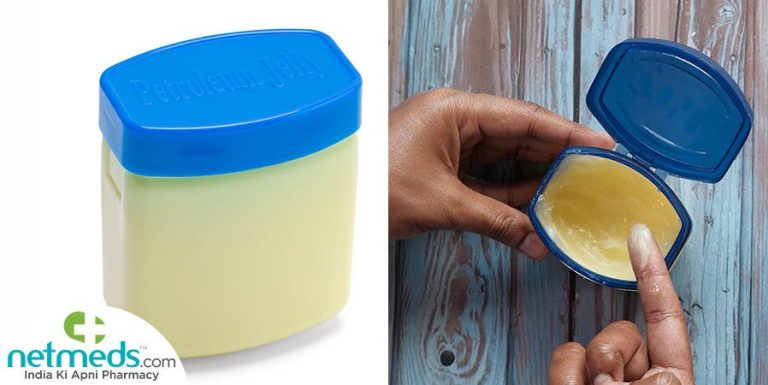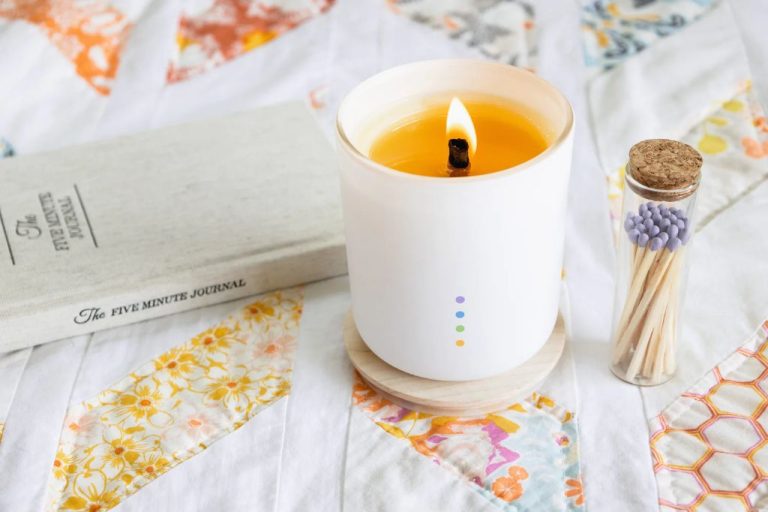Is Bees Wax Ok On The Skin?
Beeswax is a natural wax produced by honey bees in their beehives. It is made from the honeycomb cells when bees secrete the wax and use it to build the familiar hexagonal cells. Beeswax has been used for thousands of years, dating back to ancient Egypt where it was used for medicinal purposes as well as in cosmetics. Over time, beeswax has remained a popular ingredient in skincare and cosmetics for its protective, soothing, and moisturizing properties.
This article provides a comprehensive overview of the uses and benefits of beeswax for skin. We will explore the composition and properties of beeswax that make it suitable for skincare, research its benefits and drawbacks when used on skin, summarize the various uses of beeswax in skincare products, and provide a comparison to other common skincare ingredients. DIY skincare recipes using beeswax will also be shared. The purpose is to inform readers on the background, uses, benefits, and considerations of incorporating beeswax into their skincare routine.
Composition of Beeswax
Beeswax is comprised of approximately 300 compounds, with the main components being saturated and unsaturated hydrocarbons, monoesters, diesters, triesters, hydroxy polyesters, and long-chain alcohols. The exact composition can vary based on the geographical location and plant sources accessible to the bees.
Beeswax is produced by young worker bees between 12-18 days old in the wax glands on their abdomens. Worker bees consume honey, pollen and propolis and metabolize it into beeswax flakes which they secrete through these wax glands. The wax scales are then chewed off their bodies and used by the bees to build the honeycomb structures of their hives [1].
Benefits of Beeswax on Skin
Beeswax provides numerous benefits when used topically on the skin due to its unique composition and properties. Some of the key benefits include:

Occlusive – Beeswax forms a protective barrier on the skin that helps seal in moisture and prevent water loss. This helps keep the skin hydrated and reduces dryness. Studies show beeswax can inhibit water evaporation from the skin by almost 30% (Source).
Anti-inflammatory – Research indicates beeswax has anti-inflammatory effects when applied to the skin. It helps calm irritation, reduce redness, and soothe sensitive skin conditions like eczema, psoriasis, and dermatitis (Source).
Humectant – Beeswax attracts and binds moisture to the skin. This provides longer lasting hydration. Using beeswax can boost skin moisture levels by over 10% compared to not using it, according to some studies.
Potential Drawbacks of Using Beeswax on Skin
While beeswax is generally considered safe for topical use, there are some potential drawbacks to be aware of:
Allergic Reactions: Some people may be allergic to beeswax and experience reactions like rashes, redness, itching, and swelling when using it on their skin. Those with known bee venom or pollen allergies should use beeswax cautiously as they may be more prone to reaction. However, pure beeswax contains no actual bee parts so reactions are less common. [1]
Contaminants: If not properly filtered and cleaned, beeswax can contain contaminants like pesticides, pollutants, dirt, and bacteria. This is mainly a concern for raw beeswax directly from the hive. High quality filtered beeswax from reputable suppliers that follow safety standards is unlikely to contain contaminants. [2]
Clogged Pores: Beeswax can clog pores for those with oily skin, potentially causing breakouts. However, many find mixing beeswax with other ingredients creates a product non-comedogenic. Those with oily skin should patch test beeswax products first.
Uses of Beeswax on Skin
Beeswax has become a popular ingredient in many skincare products thanks to its beneficial properties for the skin. Some of the most common uses of beeswax in skincare include:
Lip Balms
Beeswax is commonly used as a base ingredient in nourishing lip balms. It helps lock in moisture and provide a protective barrier on the lips. The emollient properties of beeswax make it an ideal ingredient for smoothing and softening dry, chapped lips (https://www.smileyhoney.com/collections/beeswax-skin-care).
Lotions
When added to body lotions, beeswax can help seal in moisture to keep skin hydrated. Its humectant properties draw water to the skin’s surface. The occlusive layer it forms over the skin helps prevent transepidermal water loss. Beeswax lotions are often used to provide soothing relief for dry, itchy skin.
Creams
Beeswax is an ingredient in a variety of nutrient-rich creams for the face and body. It acts as an emollient to smooth and soften skin. In facial creams, beeswax is combined with other moisturizing oils and extracts to hydrate the skin and improve overall texture.
Salves
Medicated salves containing beeswax, essential oils and herbs have been traditionally used to help heal skin irritations. The protective coating beeswax provides helps lock in moisture and nutrients. When applied to minor cuts, scrapes or burns, it creates a soothing, nurturing barrier (https://www.amazon.com/beeswax-skin/s?k=beeswax+for+skin).
Comparisons to Other Skincare Ingredients
Beeswax is often compared to other popular skincare ingredients like petroleum jelly, coconut oil, and shea butter. Here’s how beeswax stacks up against these other moisturizers:
Petroleum Jelly: Both petroleum jelly and beeswax can help seal in moisture and form a protective barrier on the skin. However, petroleum jelly is a byproduct of the oil industry whereas beeswax is all-natural. Some people find petroleum jelly comedogenic (pore-clogging). Beeswax is considered non-comedogenic for most skin types.
Coconut Oil: Like beeswax, coconut oil has antibacterial and anti-inflammatory properties. However, coconut oil is highly comedogenic for some skin types. Beeswax is much less likely to clog pores.
Shea Butter: Both shea butter and beeswax soften, hydrate, and protect skin. However, shea butter is plant-based whereas beeswax comes from bees. Shea butter tends to feel heavier and greasier, while beeswax feels lighter on the skin. Shea butter can sometimes go rancid, but beeswax has a very long shelf life.
Overall, beeswax offers similar moisturizing abilities to these alternatives, with the added benefits of being antibacterial, non-comedogenic, and easy to use. Beeswax is a good option for people with sensitivities to other ingredients.
How to Choose Quality Beeswax Products
When selecting beeswax products for your skin, look for items made with pure, high-quality beeswax. Pure beeswax contains beneficial vitamins, minerals, and fatty acids without any added chemicals. Verify the purity of beeswax by looking for terms like “100% pure beeswax” or “unrefined beeswax” on the label.
Avoid products containing paraffin, petroleum, or mineral oil, as these can clog pores. Steer clear of beeswax blended with artificial fragrances, dyes, and preservatives, which may irritate sensitive skin. The simplest products with just beeswax and carrier oils like coconut oil or jojoba oil make the best choice.
Opt for certified organic beeswax when possible, as this ensures the beeswax comes from bee farms with safe, sustainable practices. Brands specializing in natural skincare also tend to have high standards for ingredients. Looking for “cruelty-free” or “fair trade” designations can further help you find ethical beeswax products.
The texture and scent of a product offers clues too – pure beeswax has a pleasant, honey-like smell. It feels thicker and more emollient than products diluted with lots of fillers. With quality beeswax products chosen, your skin will fully benefit from beeswax’s moisturizing, anti-inflammatory properties.
DIY Beeswax Skincare Recipes
Beeswax is a versatile ingredient that can be used to make a variety of homemade skincare products. Here are some simple recipes focusing on lip balm, body butter, and skin salve:
Simple Lip Balm
This easy lip balm recipe only requires beeswax, coconut oil, and essential oils (Beeswax Recipes for Lip Balm, Lotion & More – Beeswax Co.). Melt 1 tablespoon of beeswax and 1 tablespoon of coconut oil in a double boiler. Once melted, remove from heat and stir in 5-10 drops of essential oils like peppermint or lemon for fragrance. Pour into small containers and let cool completely before using.
Body Butter
For nourishing body butter, combine 1/4 cup each of melted beeswax, shea butter, and coconut oil (4 DIY Beeswax Skincare Recipes). You can also add 2 tablespoons of jojoba oil. Optional extras include vitamin E oil and essential oils. Mix everything together, then store in an airtight container. Apply liberally to moisturize dry skin.
Skin Salve
To make a soothing skin salve, melt 1/4 cup beeswax with 1/2 cup olive oil (Beeswax Recipes for Lip Balm, Lotion & More – Beeswax Co.). You can infuse the oil with calendula flowers or comfrey root for added skin benefits. Remove from heat and mix in 1/4 cup honey. Pour into containers and allow to set fully before use. Apply to minor cuts, burns, rashes, or cracked skin.
The Takeaway
In summary, beeswax offers several benefits when used on the skin. It acts as an occlusive to lock in moisture, provides a protective barrier against irritants, has anti-inflammatory and antibacterial properties, and contains beneficial vitamins. The emollient texture also leaves skin feeling soft and supple.
Beeswax is suitable for most skin types, including dry, normal, oily, mature, and sensitive skin. Those with very oily skin may find thicker formulations too heavy. People with bee allergies should also avoid beeswax.
When purchasing beeswax skincare, look for products made with pure, unprocessed beeswax. Cosmetic-grade beeswax has been refined and stripped of many beneficial compounds. Products certified organic by reputable third parties help ensure quality. Performing a patch test before full use is also recommended.
References
Sources include medical journals, dermatology sites, skincare blogs, beekeeping resources, and natural skincare product sites. Information on beeswax composition comes from scientific papers analyzing the chemical makeup. Data on skincare benefits and uses comes from dermatologists, cosmetic chemists, and skincare experts. Comparisons to other ingredients rely on studies analyzing and contrasting their effects. Advice on choosing quality beeswax products comes from consumer guides and natural skincare advocates. DIY recipe recommendations are from sites focused on natural and homemade solutions. All sources aim to provide multiple expert perspectives from credible sources on the safety and effects of beeswax for skincare use.






